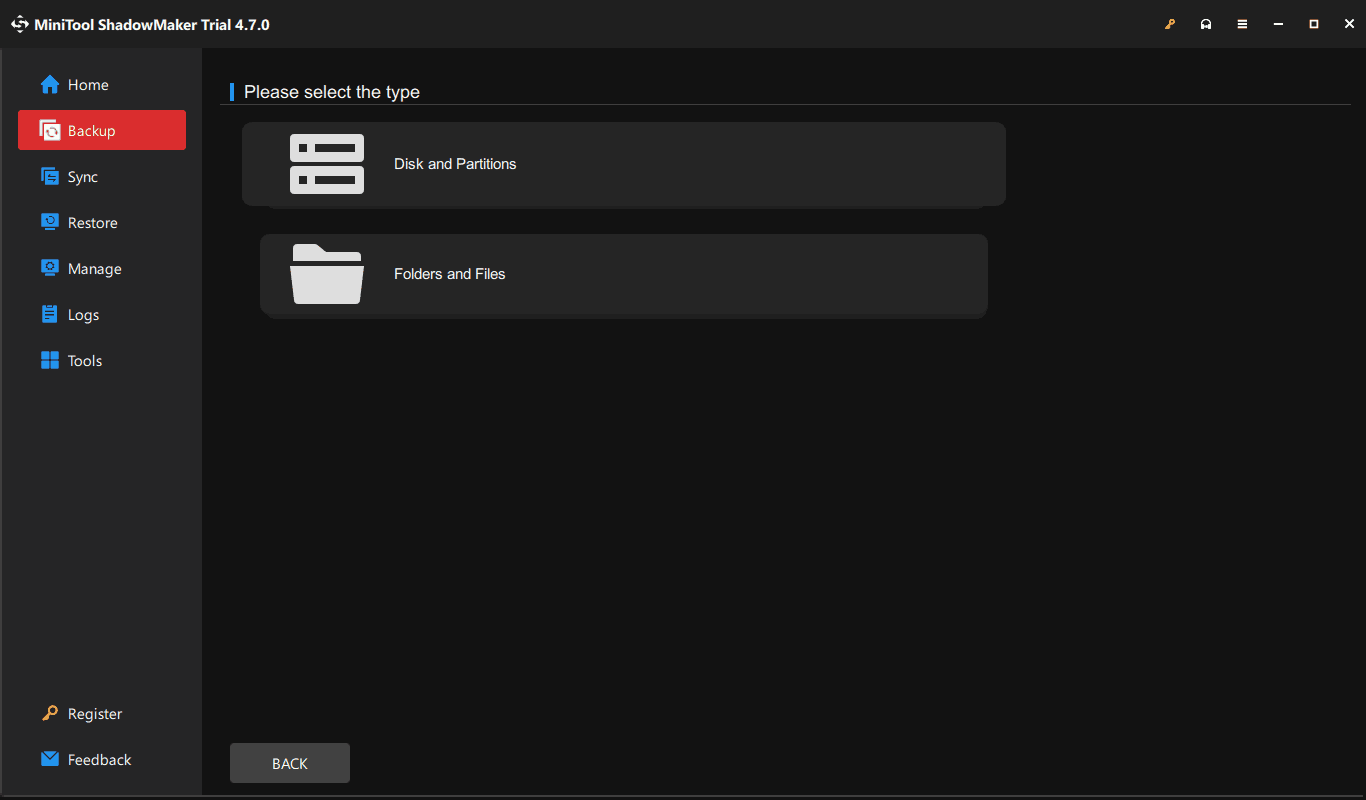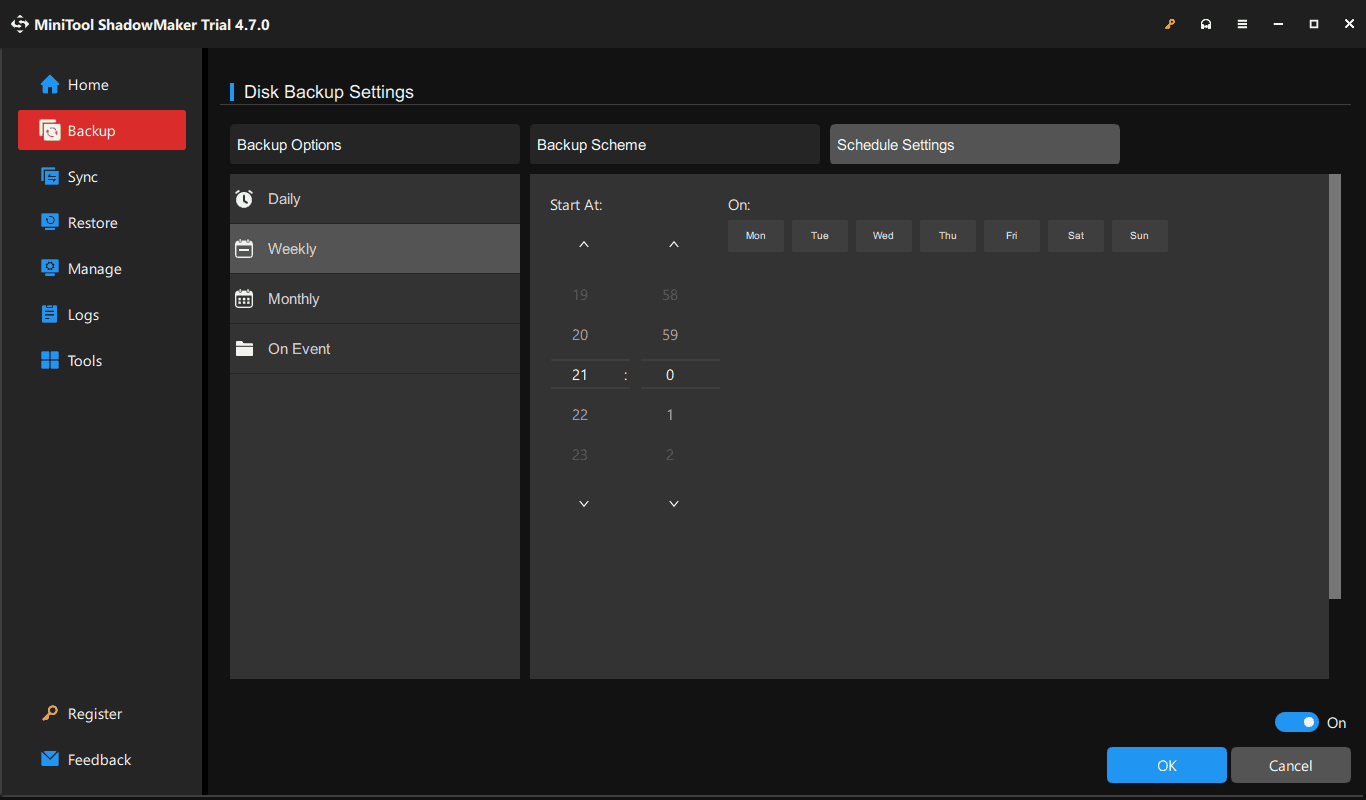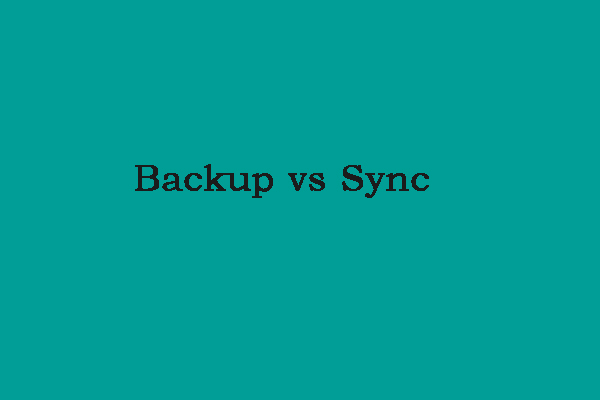When it comes to data backup, which way should you use – backup or copy files? Learn the difference between these two backup methods and you will know which one to use for data protection. MiniTool introduces some details in this guide.
In the digital age, more and more users have realized the necessity of data backup to prevent carking data loss. With backups, it is easy to restore data deleted by various unexpected computer accidents, threats, human mistakes, etc.
Speaking of computer backup, some users consider simple copy & paste while some users mention professional backup software. So which one should you choose: backup or copy files? After learning some information about these two methods, you will make a decision.
Backup vs Copy Files
About Backup
Backups created by a backup tool can contain all the PC contents, including Windows system files, registry files, app files, personal data, and other files in the entire hard drive. You can save those backups to an external hard drive, USB drive, network location, cloud, and more. Once data gets lost, backups are used to restore your precious data.
A backup program can automate the backup process to make sure you always have continuous backups. You can decide how often to implement backups. Besides, it keeps multiple backup versions for tracking so that you get a quick and exact recovery.
Importantly, this backup method allows you to only backup the changes via the incremental or differential method, saving time and storage space. During the backup process, files can even be compressed and encrypted.
Besides, you should pay attention to one thing: when making a backup with a backup tool, you need that backup software to restore. That is, another software cannot be used to restore backup.
About Copy
Copying and pasting files is a simple process. You can select the files or folders you want to back up and copy them. Then, paste them to another drive. Since this is a manual process, it is a bit complicated if you have multiple targets for backups.
Besides, you don’t have old file versions via the simple copy. This method cannot help create a complete system image.
Differences
What is the difference between backup and copy? We summarize two main points:
Content: Backups cover all the PC contents including the hidden files but a copy cannot copy everything.
Advanced options: A backup software gives multiple options for you to make backups to meet different needs while the copy method is just simple copy & paste from one drive to another drive.
In conclusion, professional backup software offers several pros: creating complete system images, scheduling automatic backups, setting incremental or differential backup schemes, compressing files, etc. This way features greater security and efficiency.
Although copy is simple, it doesn’t ensure data integrity in the event of failures.
When reading here, we believe you can make a decision – backup or copy files. This depends on your needs. Or, you take both of these two methods to protect your important files and folders.
Best Choice: Backup Software – MiniTool ShadowMaker
As stated above (in the section of backup vs copy files), backup via backup software is more comprehensive than a simple copy, making it the first choice. In the software market, MiniTool ShadowMaker stands out due to its reliability and professionalism.
As reliable backup software, it works well in Windows 11, 10, 8.1, 8, and 7, as well as Windows Server 2022, 2019, 2016, etc. MiniTool ShadowMaker offers rich features, satisfying kinds of needs. Let’s focus on some highlights:
- Allows backing up various data types, for example, system, partition, disk, files, and folders.
- Supports scheduling a plan like daily, weekly, monthly, or on an event to automatically back up PC data.
- Backs up your PC to an external hard drive, USB drive, NAS, etc.
- Helps configure a backup scheme including incremental, differential, or full backup, meanwhile, deletes old versions to manage disk space.
- Comes with a feature to create a WinPE bootable media for recovery when the system fails to boot.
- Supports cloning HDD to SSD, cloning SSD to a larger SSD, sector by sector cloning, and more.
- Syncs your files & folders to another location.
- Restores Windows system image to a PC with dissimilar hardware.
To back up your computer, get this software to begin.
MiniTool ShadowMaker TrialClick to Download100%Clean & Safe
Step 1: Connect your USB drive or external drive to your computer and then launch MiniTool ShadowMaker Trial Edition to its main interface.
Step 2: By default, this backup tool backs up the current operating system. To create a backup for your files, go to Backup > SOURCE > Folders and Files, tick the files or folders you wish to back up, and click OK.

Next, hit DESTINATION, and choose the USB drive or external drive to save the backup image file.
Step 3: To automatically back up your PC, go to Options > Schedule Settings, enable this option, and schedule a plan as per your needs. To set a backup scheme, click Options > Backup Scheme and turn it on.

Step 4: Later, go back to the Backup page and click Back Up Now to start a full backup. At the time point, MiniTool ShadowMaker will automatically create backups.
Step 5: If you need to clone a hard drive to another disk, navigate to Tools > Clone Disk and finish the cloning by following the prompts.
The End
Many users feel confused about the meaning of backup and copy. In this post, you know the difference between them and which method to use – backup or copy files.
If you are looking for an all-in-one backup program, MiniTool ShadowMaker is definitely worth a try. With the support for various backup types, backup locations, disk cloning, etc., this software becomes the best choice for many users. Get it to use!
![[Pros & Cons] Backup vs Replication: What’s the Difference?](https://images.minitool.com/minitool.com/images/uploads/2022/10/backup-vs-replication-thumbnail.png)

User Comments :